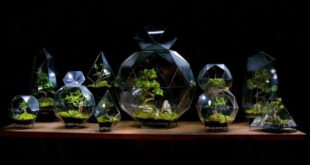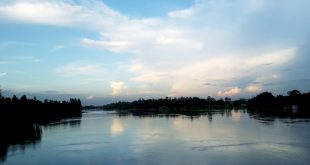Methods of Calculation of Quantitative Data
Quantitative data for individual species is calculated by the following methods:
1) Frequency = Number of sampling units in which the species occurred/Total number of sampling units studied
- Relative frequency = Frequency of a sp./Total frequency of all spp. X 100
2) Density = Total no. of individuals of the species in all sampling units studied/Total no. of sampling units studied.
- Relative density = (Density of the species X 100)/ Total density of all species
3. Abundance = Total no. of individual of the species in all sampling units/ Number of sampling units in which species occurred
- Relative abundance = (Abundance of a sp. X 100)/ Total abundance of all sp.
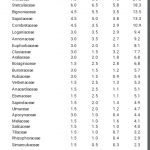 IVI(Importance Value Index)
IVI(Importance Value Index)
IVI = RF + RD + RA
- It gives an overall estimate of the influence or importance of a species in a community.
- IVI value ranges from 0 to 300 %.
Use of Importance Value Index (IVI)
- If the plant communities are highly heterogeneous, the classification of community on the basis of dominant or co-dominants becomes impractical. Therefore, Curtis and McIntosh (1951) came up with the index of ‘Importance Value’ to develop a logical arrangements of the stands.
- Importance Value Index (IV) is the sum of relative density, relative frequency, and relative dominance for each species. It can be expressed as a range from 0 to 3.00 or 300 percent or may be divided by 3 to give importance percentage that will range from 0 to 1.0 or 100 percent. If only two values such as relative frequency and relative density are considered then IVI is expressed in turns of 0 to 2 or 200 percent.
- IV provides an overall estimates of the influence or importance of species in a community. Once IVIs have been obtained from species within a stand, stands can be grouped by their leading dominants according to IVI and groups can be placed in a logical order based on the relationships of several predominant species.
Sheet for Vegetation Survey
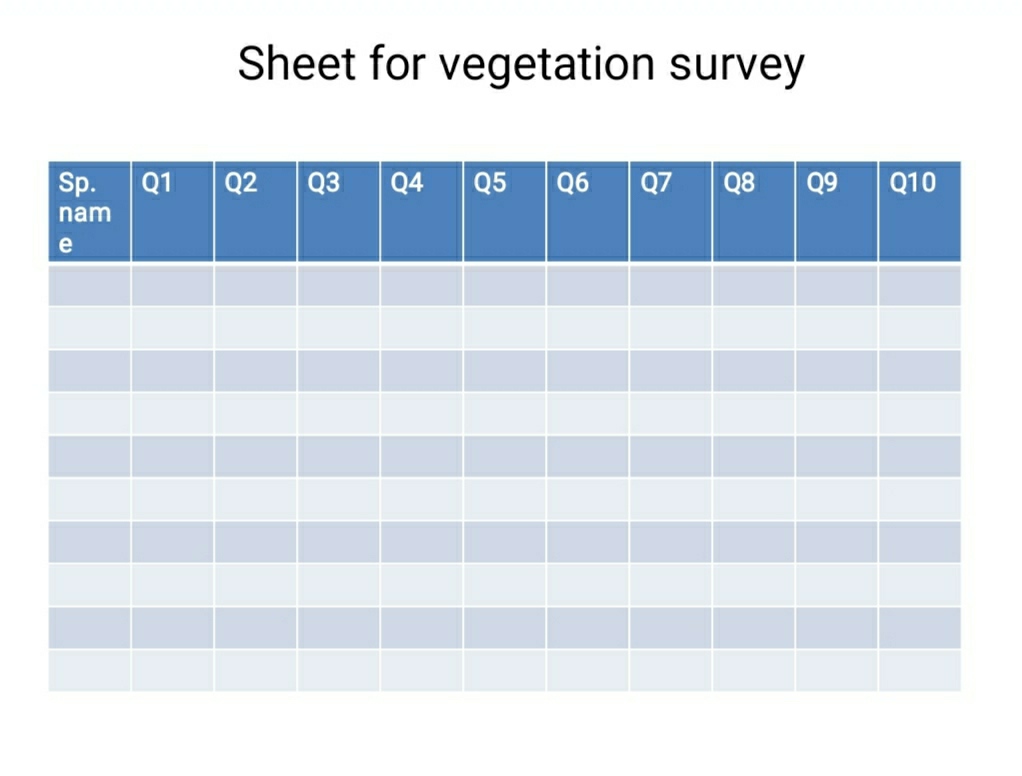
Life-form Classes
Life-form composition is a basis for describing vegetation.
- The best known description and classification of life forms was given by Danish botanist Christen C. Raunkiaer (1909,1928 and 1934). Later on, it was extended by various authors.
- He classified the life forms of species based on the height of perennating buds.
- He showed that this criterion appeared to reflect adaptation to climate.
- He based this classification on the assumption that the original environment was considerably more moist and uniformly hot than it is now.
- Accordingly, the most primitive life form is that which dominates tropical vegetation at the present time. Conversely, the more highly evolved species are found in the colder areas of the world.
Raunkiaer established the following life-form classes:
1. Phanerophytes:
- Perennating buds or shoot apices are borne on aerial shoot.
- Woody perennial plants with projecting stems into the air.
- These may be of the following groups:
a. Evergreen phanerophytes without bud scales (tropical tree species)
b.Evergreen phanerophytes with bud scales
c.Deciduous phanerophytes with bud scales
- Each of the above groups can also be sub-divided into the following groups:
- Megaphanerophytes (>30 m in height)
- Mesophanerophytes (8-30 m)
- Microphanerophytes (2-8 m) and
- Nanophanerophytes (<2 m in height).
Two further groups are usually included: epiphytes and stem-succulent.
2. Chamaephytes
- Perennating buds or shoot apices are borne very close to the ground.
- Height is not more than 25 cm above the soil surface, (e.g., Empetrum nigrum)
3. Hemicryptophytes
- Perennating buds are at ground level.
- All aboveground parts are dying back at the onset of unfavorable conditions.
- Stolons may or may not be present.
a. Proto Hemicryptophytes
Lowermost leaves on stem less perfectly developed than the upper ones, the perennating buds arise at ground level. e.g. Rubus idaeus.
b. Partial rosette plants
The best developed leaves form a rosette at the base of the aerial shoot, but some leaves are present on the aerial shoot.
c. Rosette plants
The leaves are restricted to a rosette at the basis of the aerial shoot. E.g. Taraxacum officinale.
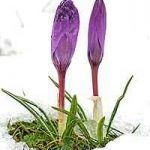 4. Cryptophytes
4. Cryptophytes
Perennating buds grow below ground level or submerged in water. e.g. rhizome, bulb, etc.
Cryptophytes are divided into 3 groups:
a. Geophytes: Rhizome, bulb or tuber geophytes, over-wintering by food stores under ground from which arise the buds to produce the next season’s aerial shoots.
b. Helophytes: Plants which have their perennating organs in soil or mud below water-level with aerial shoots above water-level. e.g. Typha, Alisma etc.
c. Hydrophytes: Plants with their perennating buds under water and with their leaves submerged or floating, e.g. Nymphaea, Potamogeton etc.
5. Therophytes:
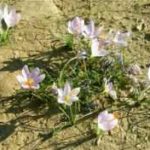 Annual plants which complete their life-cycle rapidly under favorable conditions and survive the unfavorable cold or dry season in the form of seed.
Annual plants which complete their life-cycle rapidly under favorable conditions and survive the unfavorable cold or dry season in the form of seed.- Their life span can be as short as a few weeks.
- They are the characteristics of desert regions and cultivated soil where the interference of man protects them from their (slower growing) natural competitors.
6. Epiphytes:
Epiphytes were originally placed in Phanerophytes but then separated because of irrelevance of soil position.
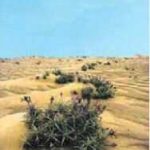 7. Aerophytes:
7. Aerophytes:
Plant that obtains moisture and nutrients from the air and rain; usually grows on other plants but not parasitic on them.
They can live on mobile sand dunes; like epiphytes and hemicryptophytes, their buds are near the surface. e.g. Tillandsia landbeckii.
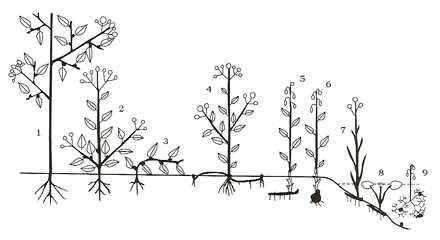
Fig: The relative positions of the perennating parts of 4 life forms: (1) Phanerophytes, (2-3) Chamaephytes, (4) Hemicryptophytes and (5-9) Cryptophytes. The persistent axes and surviving buds are shown in black (Raunkiaer 1934)
Raunkiaer Life-form Classification
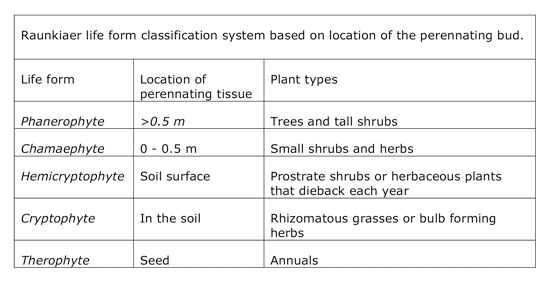
Biological Spectrum
- The series of % of all the life forms of all plants in a community is called biological spectrum.
- Biological spectrum indicates the climate of the area and since plants are used in the analysis of the spectrum, hence it is also known as phyto-climatic spectrum.
- Biological spectrum represents the distribution of various life forms in percentile manner. One can prepare biological spectrum of any area by obtaining the % value of various plant groups.
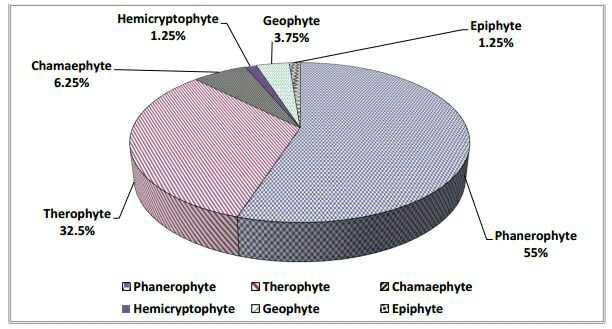
Can be classified based on the following:
- Physiognomy
- Floristics and
- Biogeography


Biogeography
- Biogeography means distribution of organisms in space and time.
- Regional meso-ecological conditions influence the plant communities.
- The smallest unit is group of plants.
Classification of Plant Communities
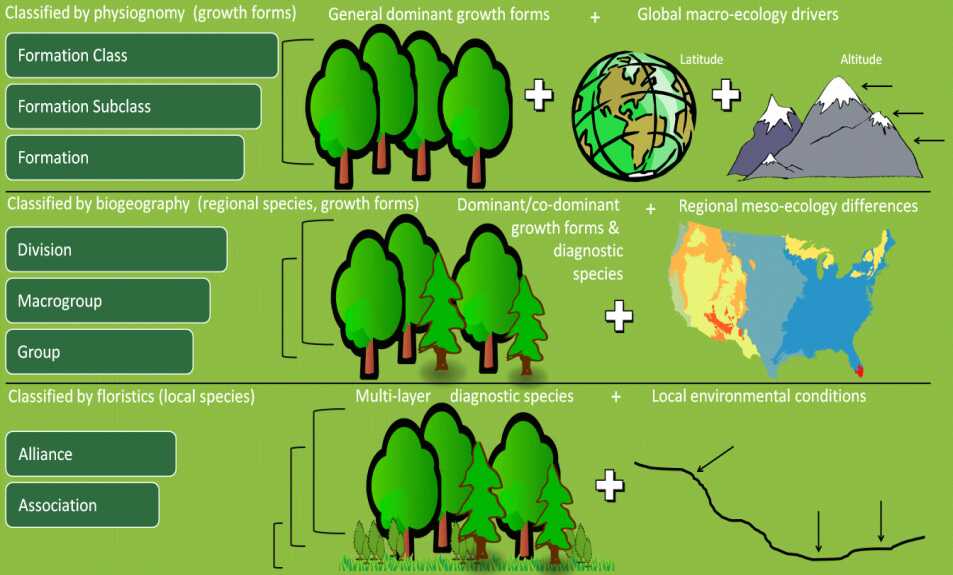
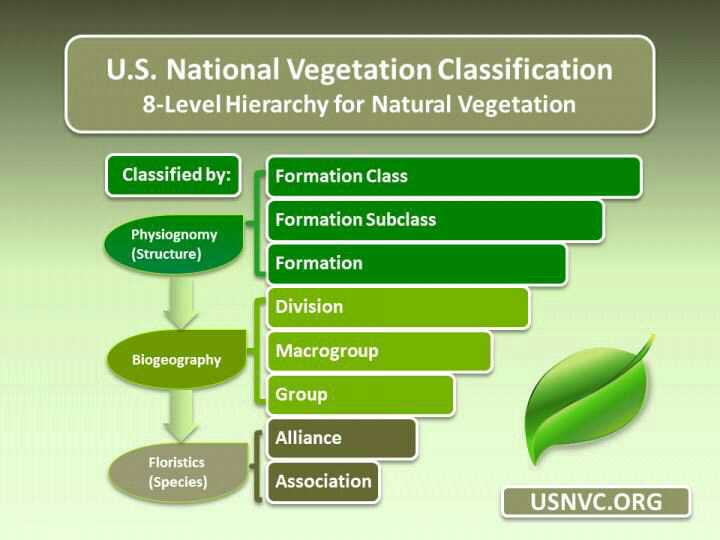
Principles of Classification
Ecological classification consists in-
(1) Evaluating organisms within Communities:
The importance of the abundant or otherwise significant species, commonly referred to as dominants, influents, suibinfluents, subdominants, etc., is great. The rarer species play no important role in biotic interaction; incidental and accidental species should be given little or no consideration.
(2) Recognizing communities on the basis of important organisms:
Classification of communities must go hand in hand with the evaluation of the organisms which constitute them. The limits of a community are determined by the limits of the dominance and influence of its outstanding species, not by the occurrence of rare, interesting, or even characteristic species. Characteristic species, however, are important indicators.
(3) Evaluating and arranging the smaller and larger communities with reference to each other.
Classification of communities has, till now, been undertaken from three view points. The first of these is concerned largely with groups originating as the offspring of single parents, or other aggregations composed chiefly of one species. Investigators interested from this viewpoint have attempted to classify the aggregations as to their origin, the relations of the individuals, etc. Some of these aggregations, especially of the social insects, have commonly been called societies, though they are, strictly speaking, families, as Read has pointed out.
Community & Habitat
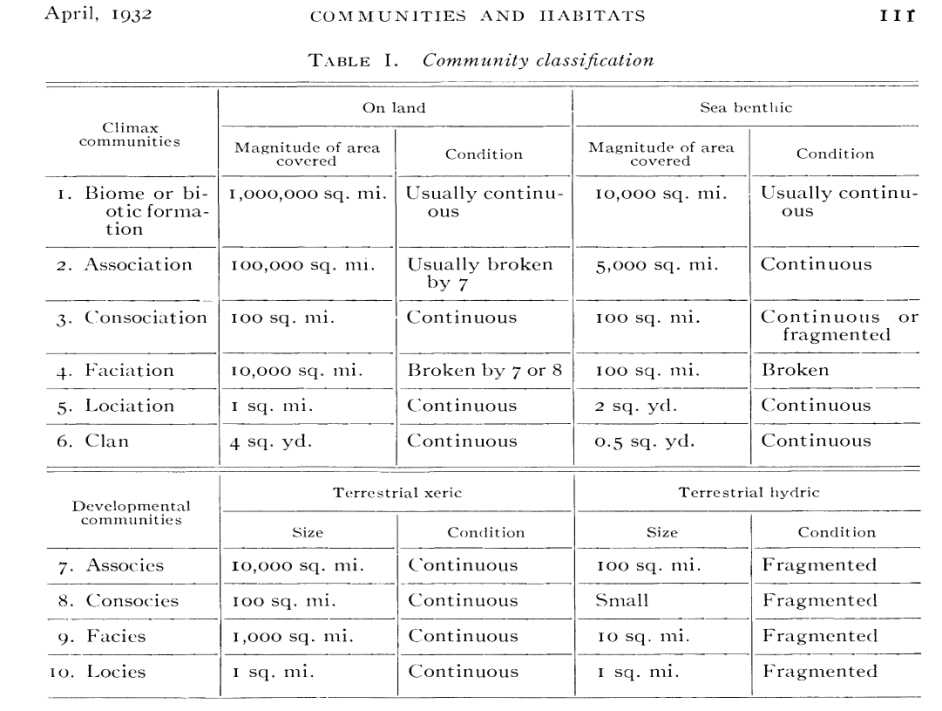
Classification of Community
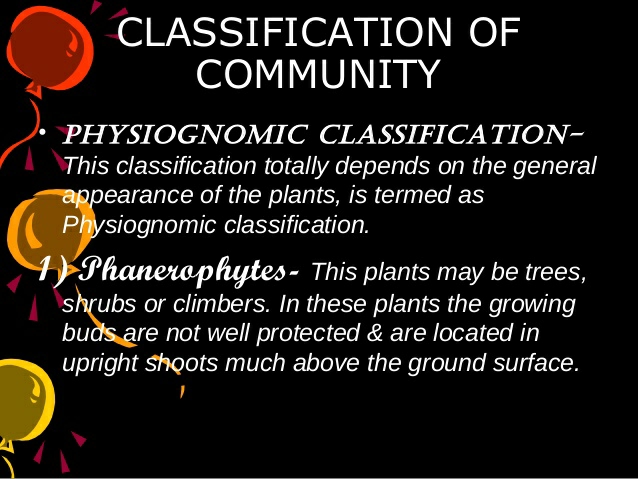
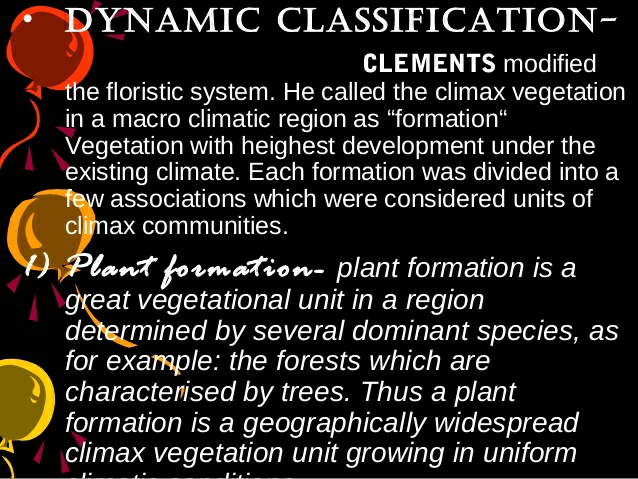
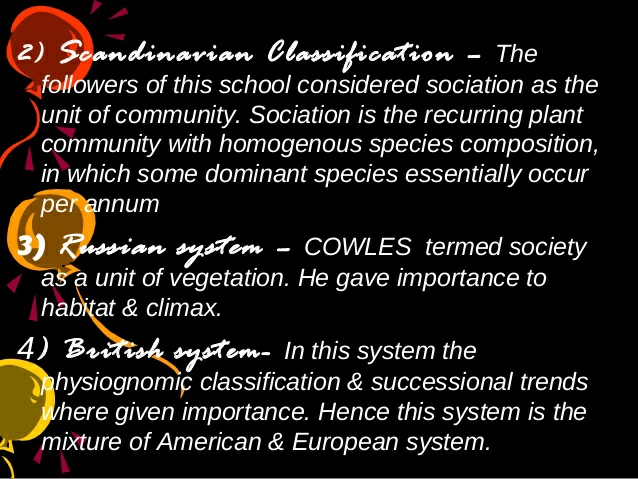
 Plantlet The Blogging Platform of Department of Botany, University of Dhaka
Plantlet The Blogging Platform of Department of Botany, University of Dhaka


